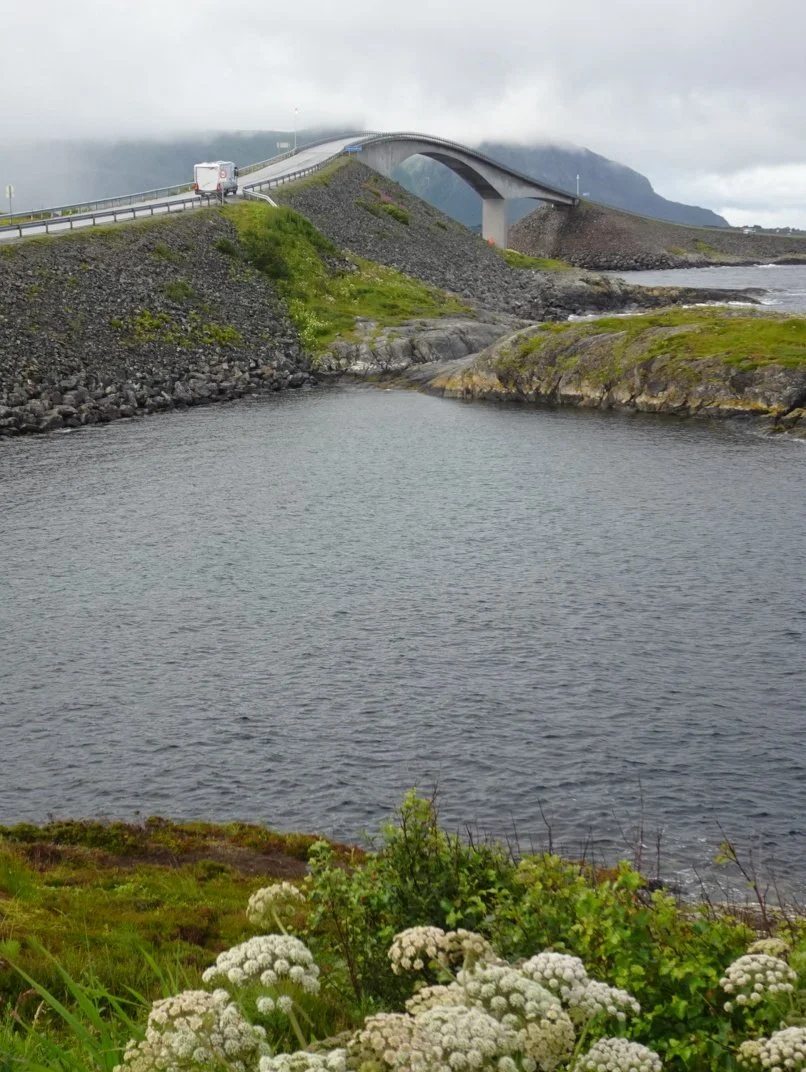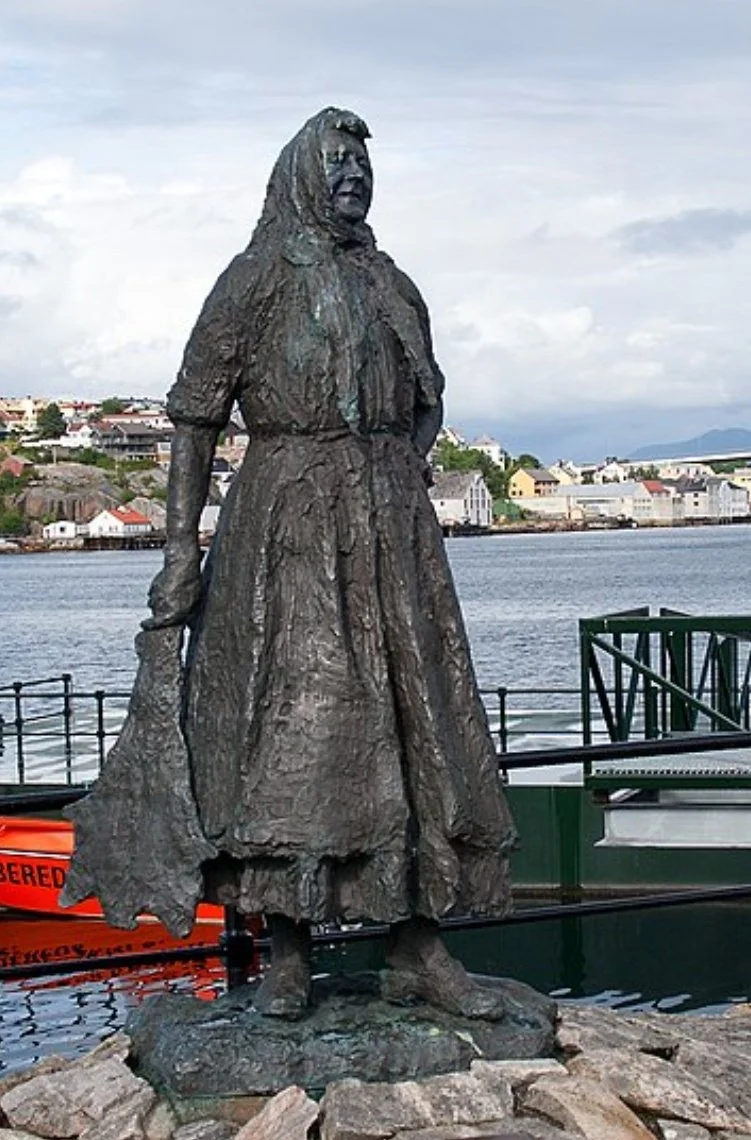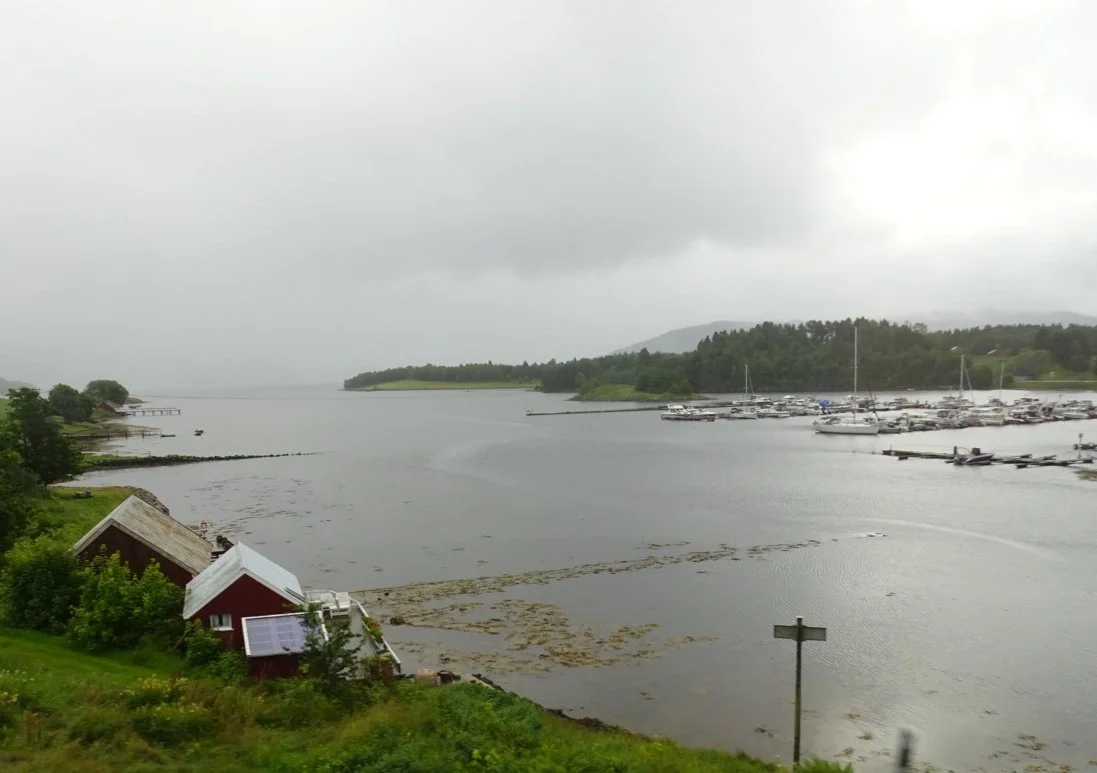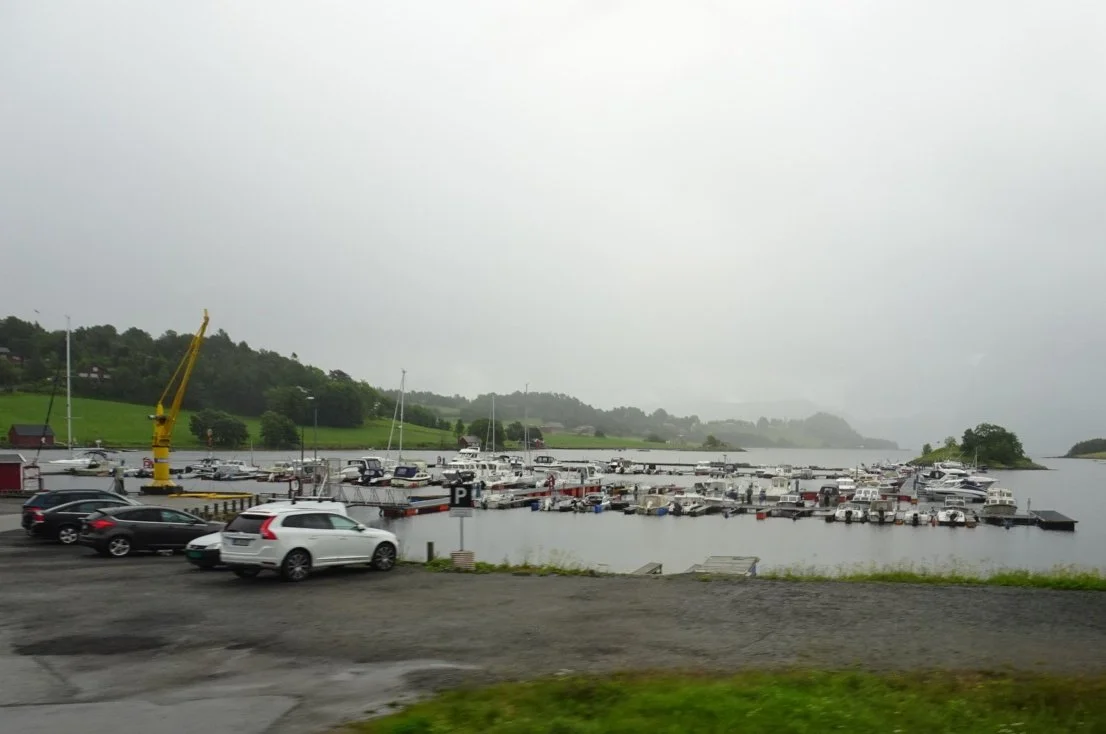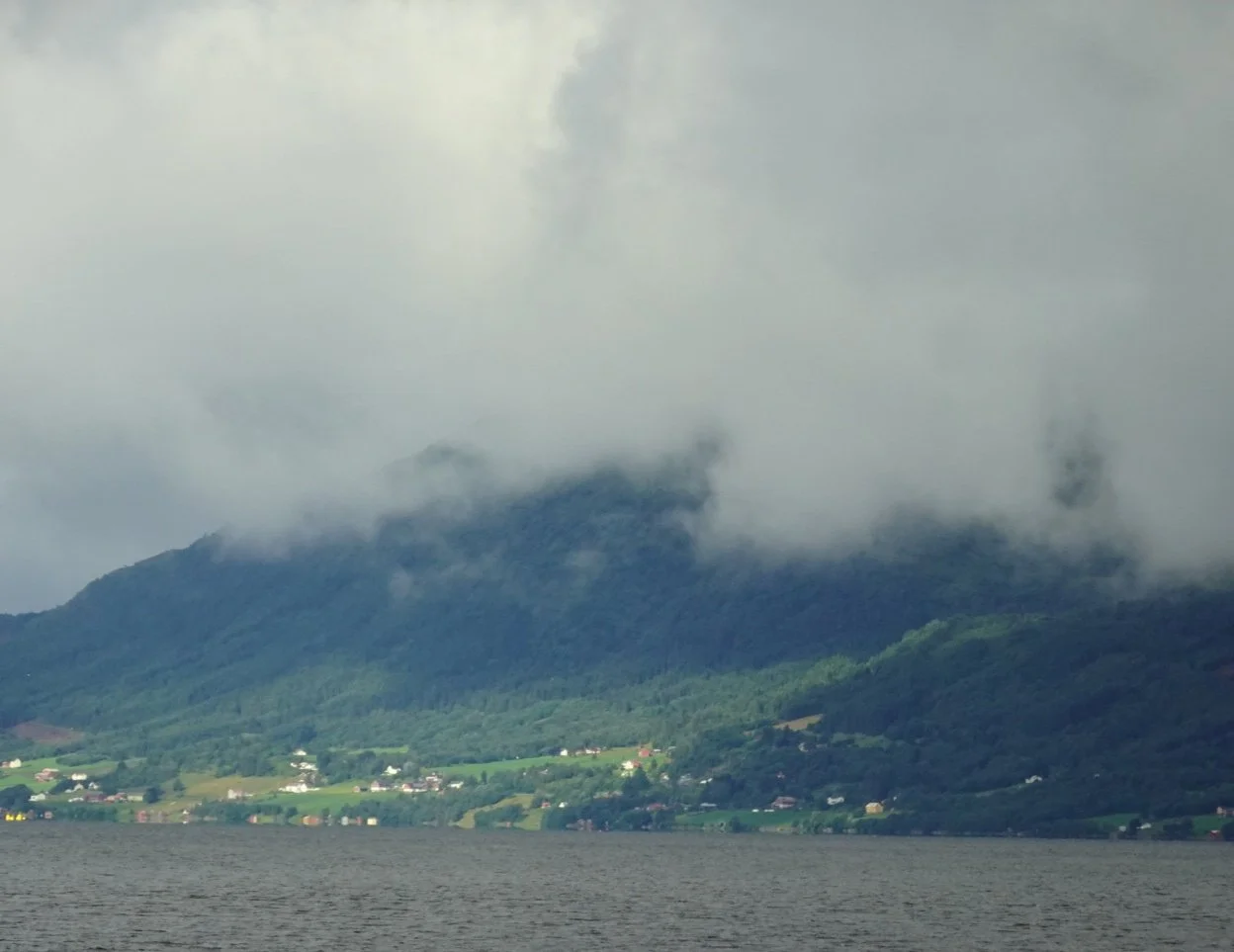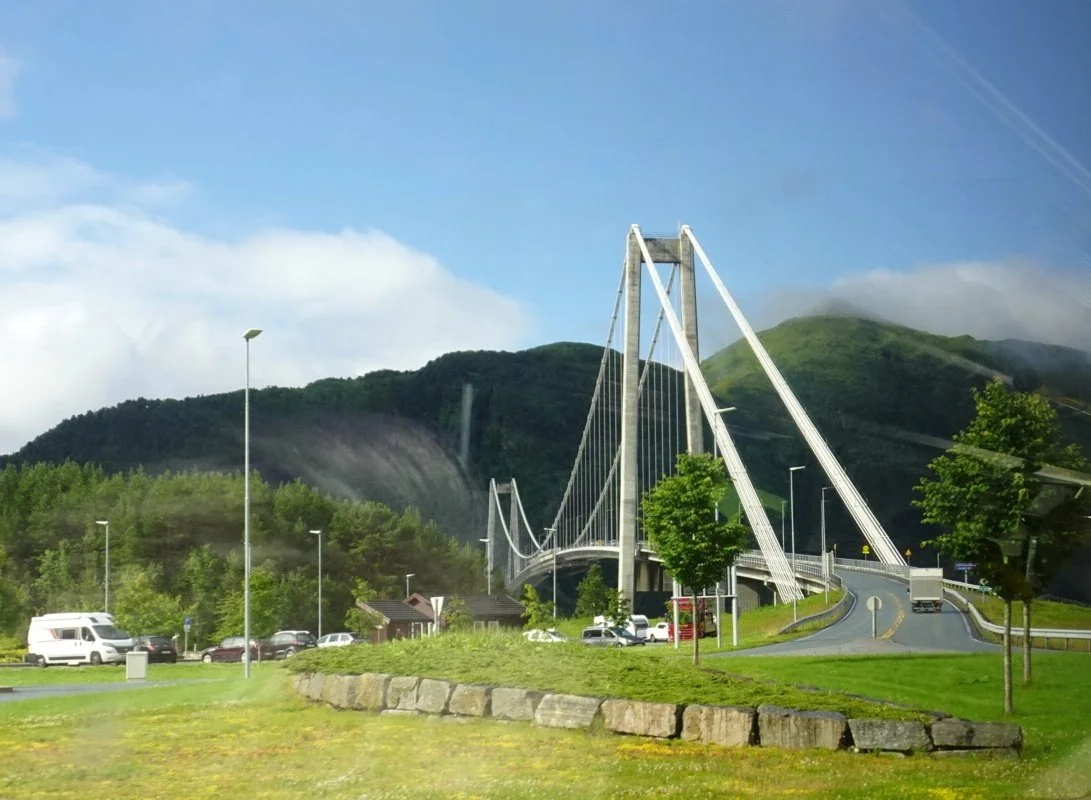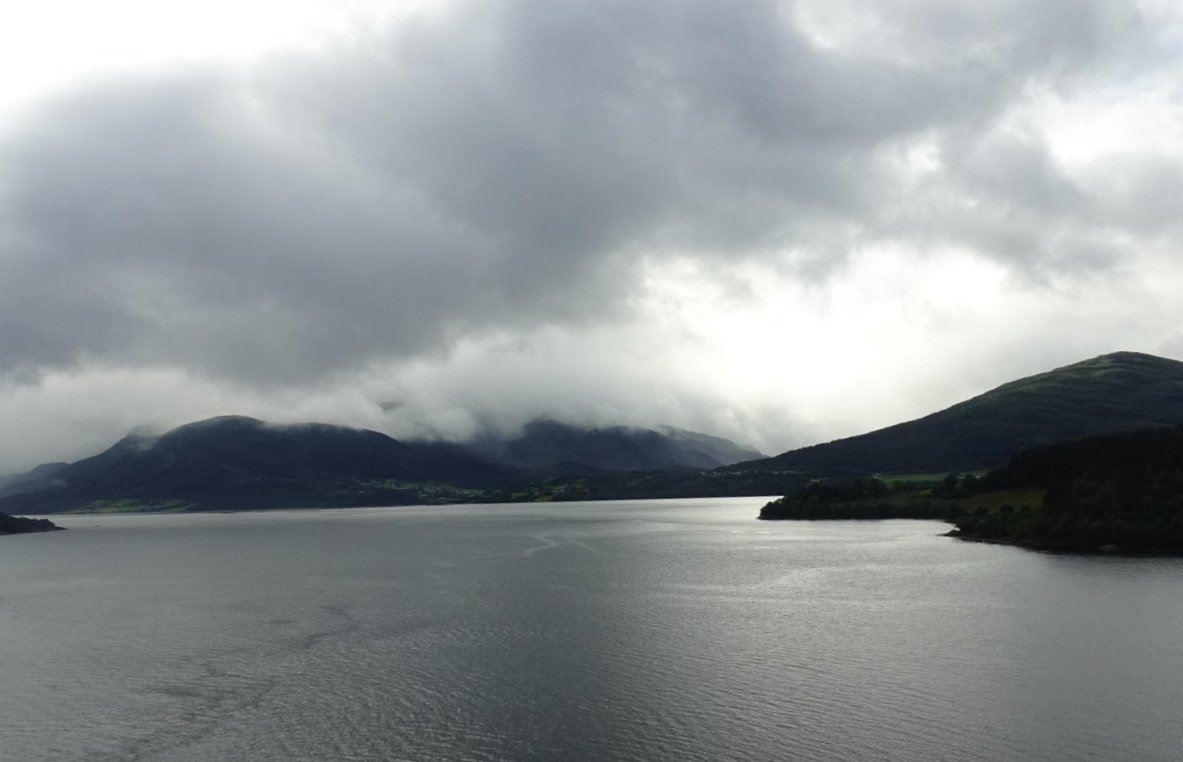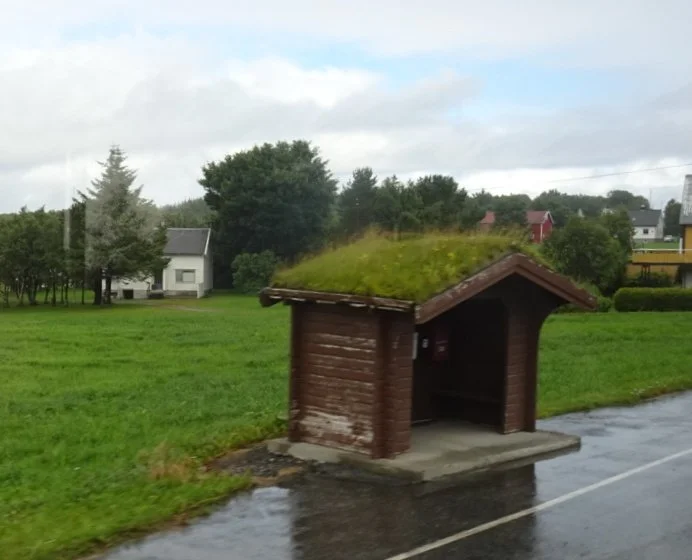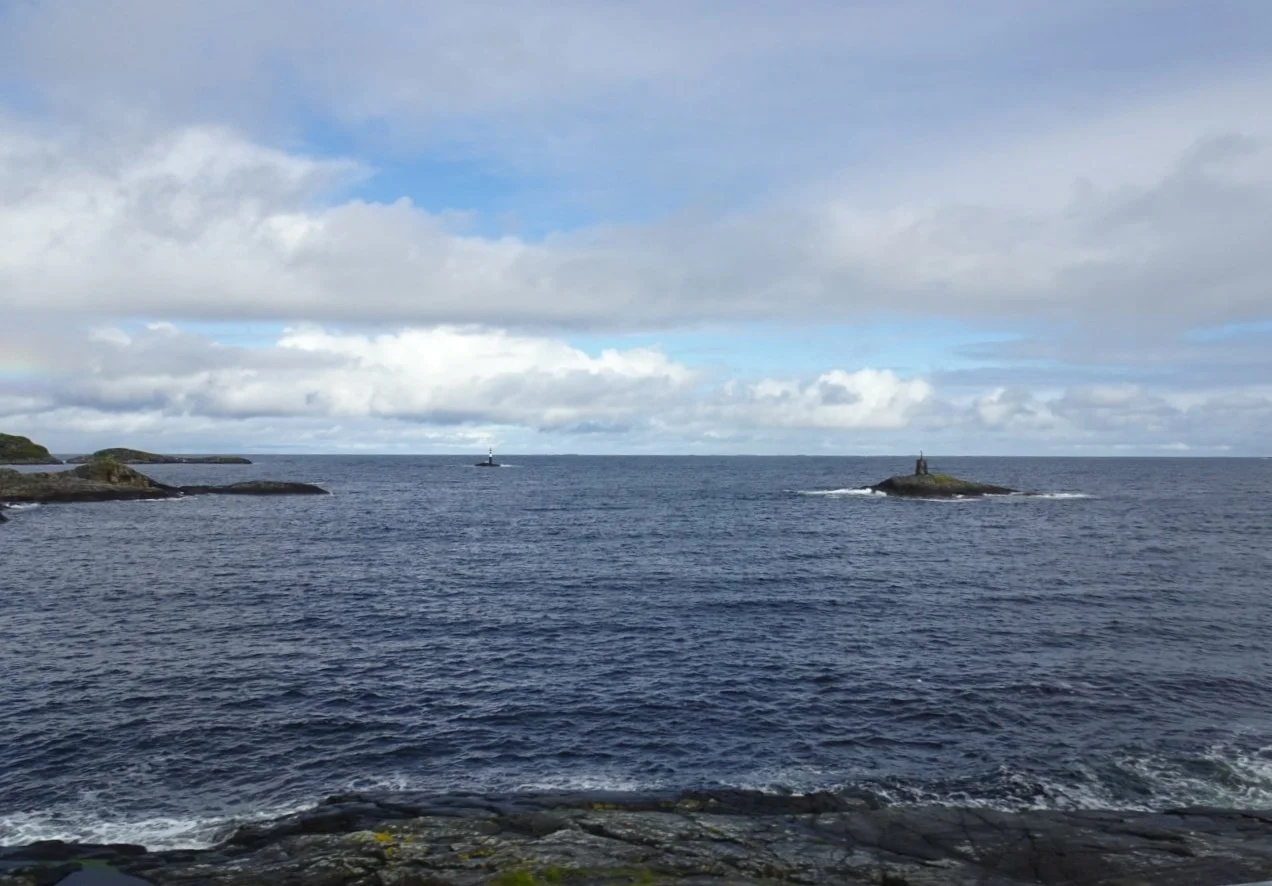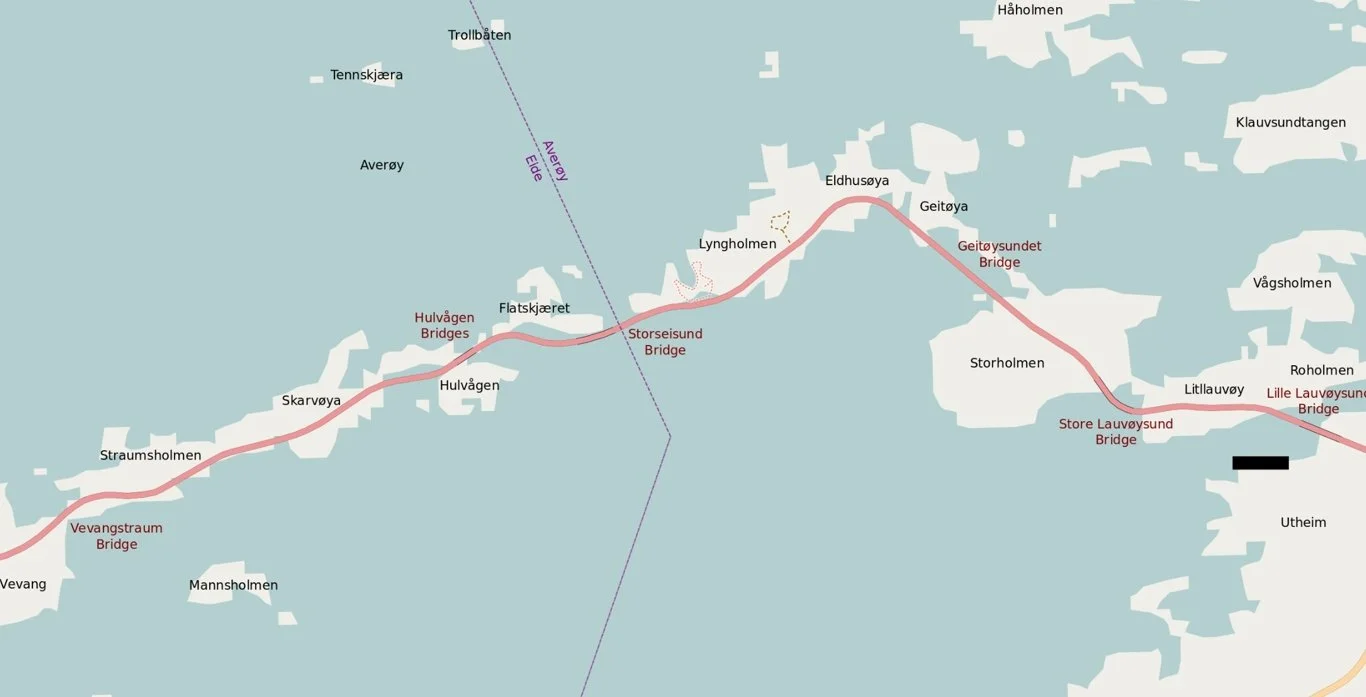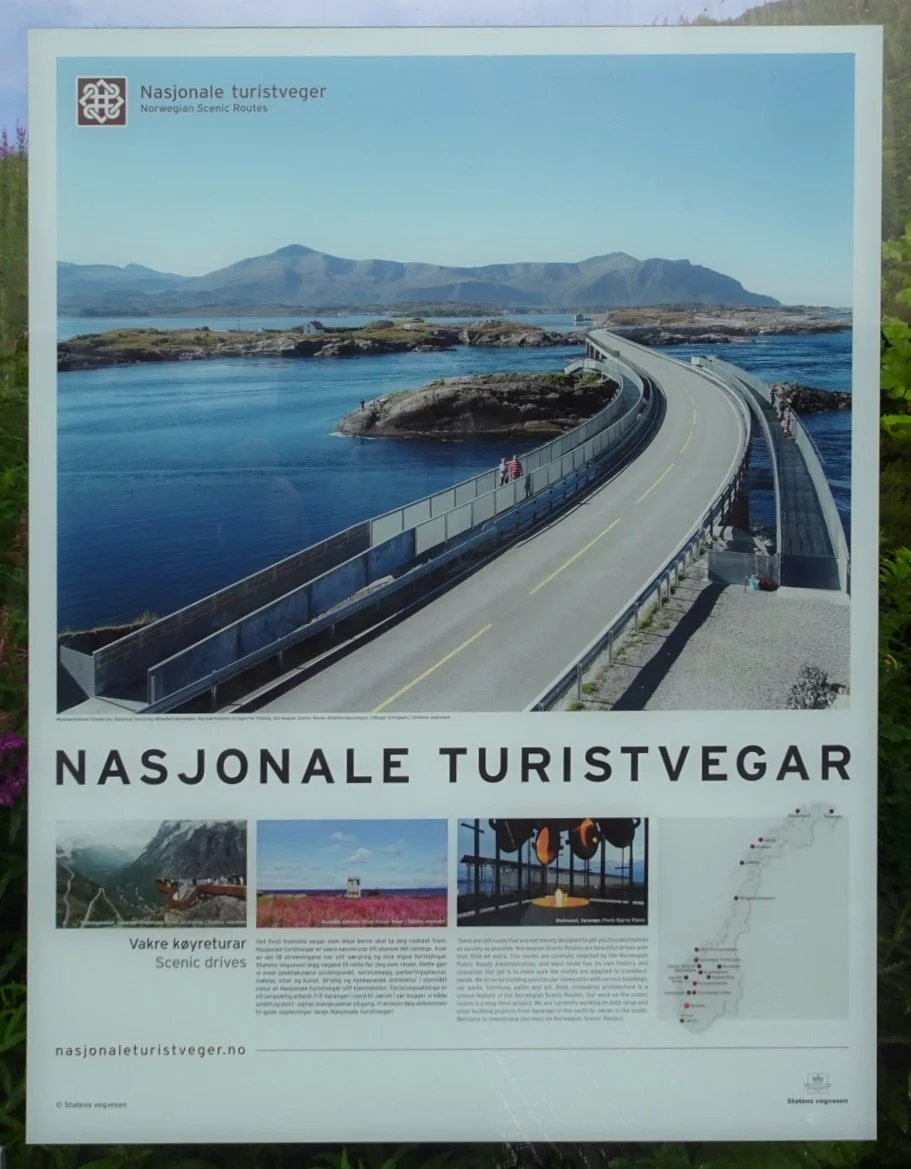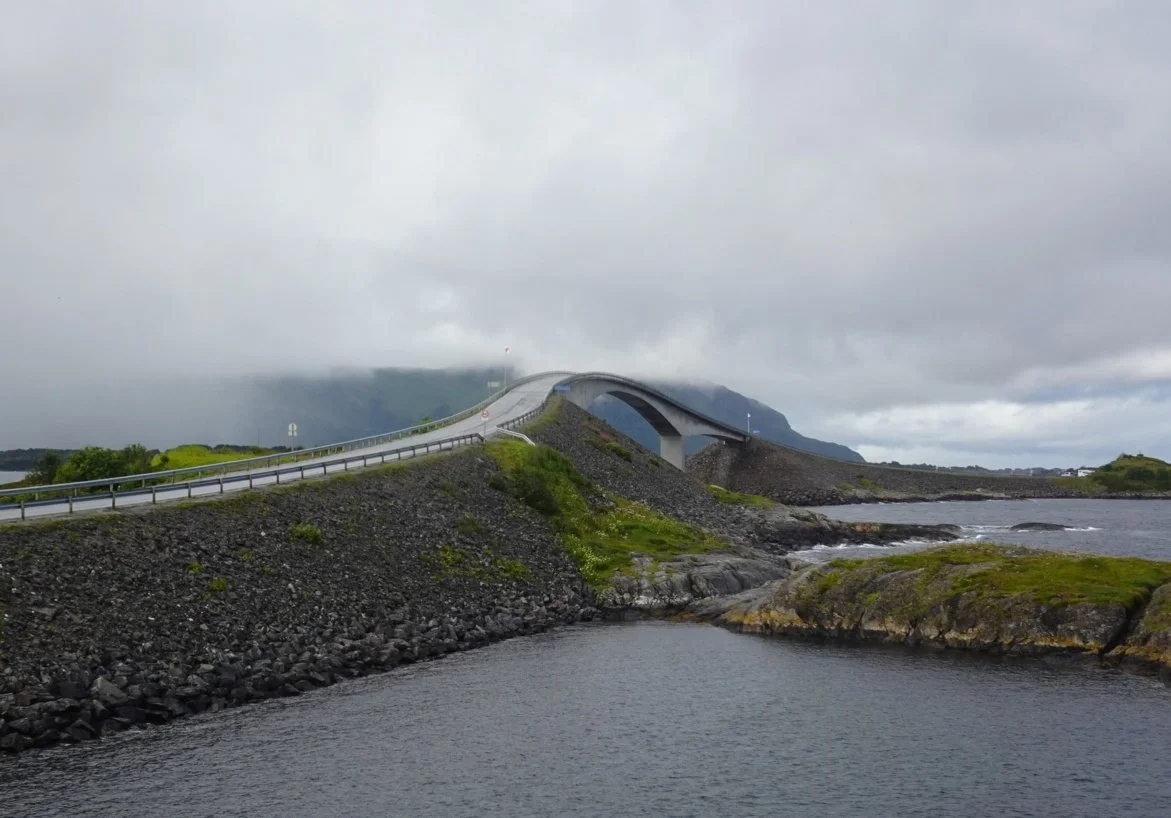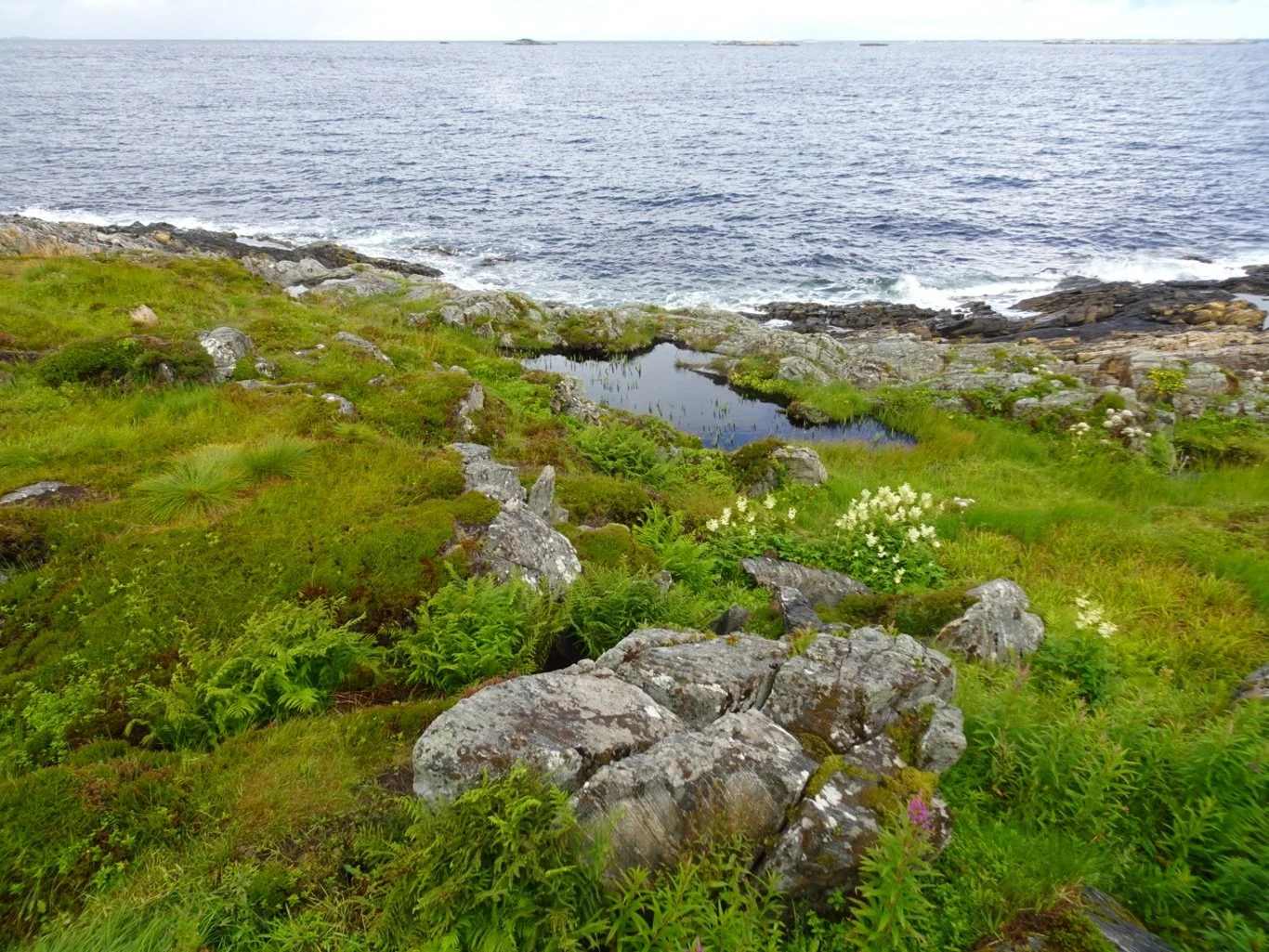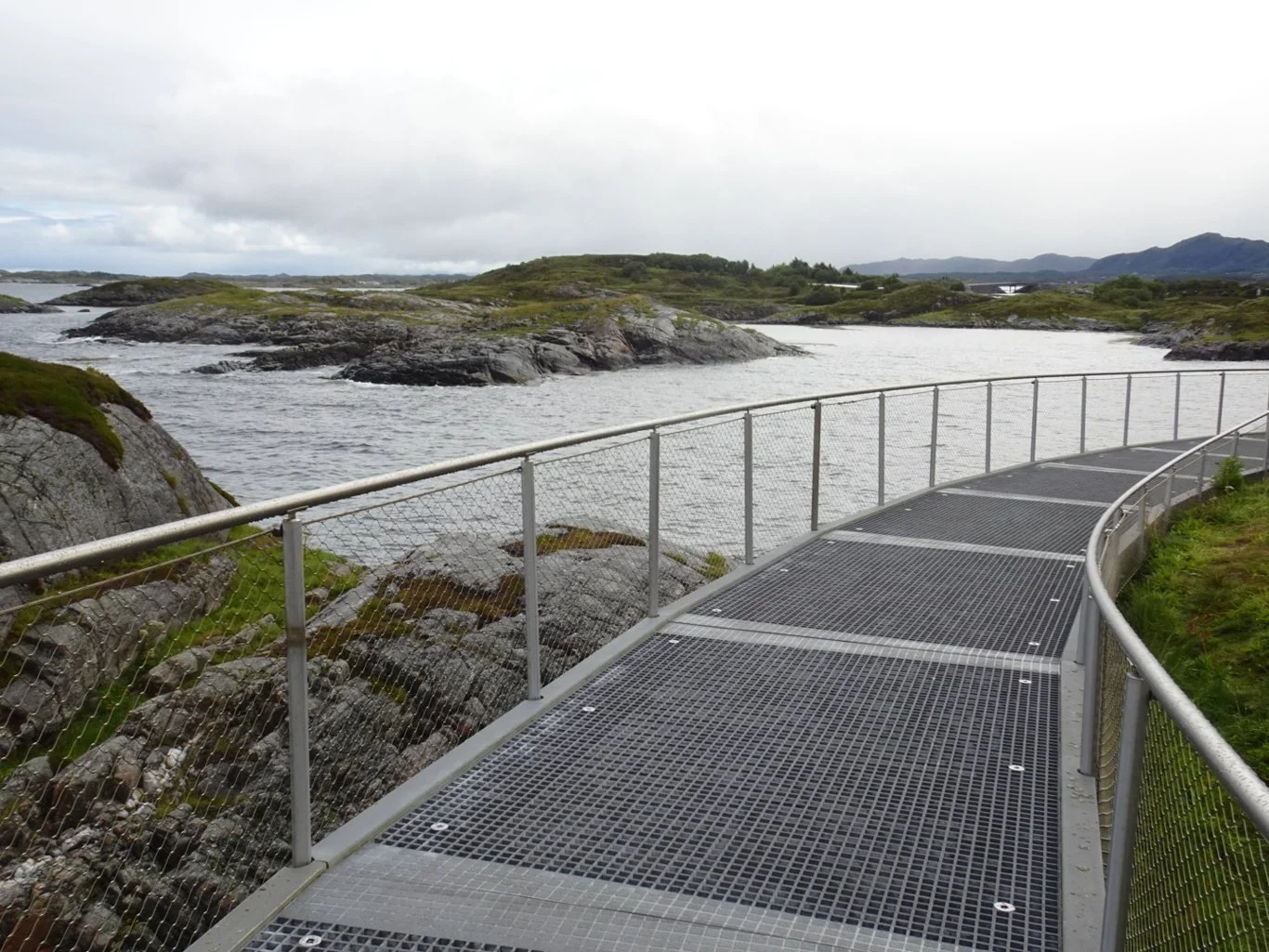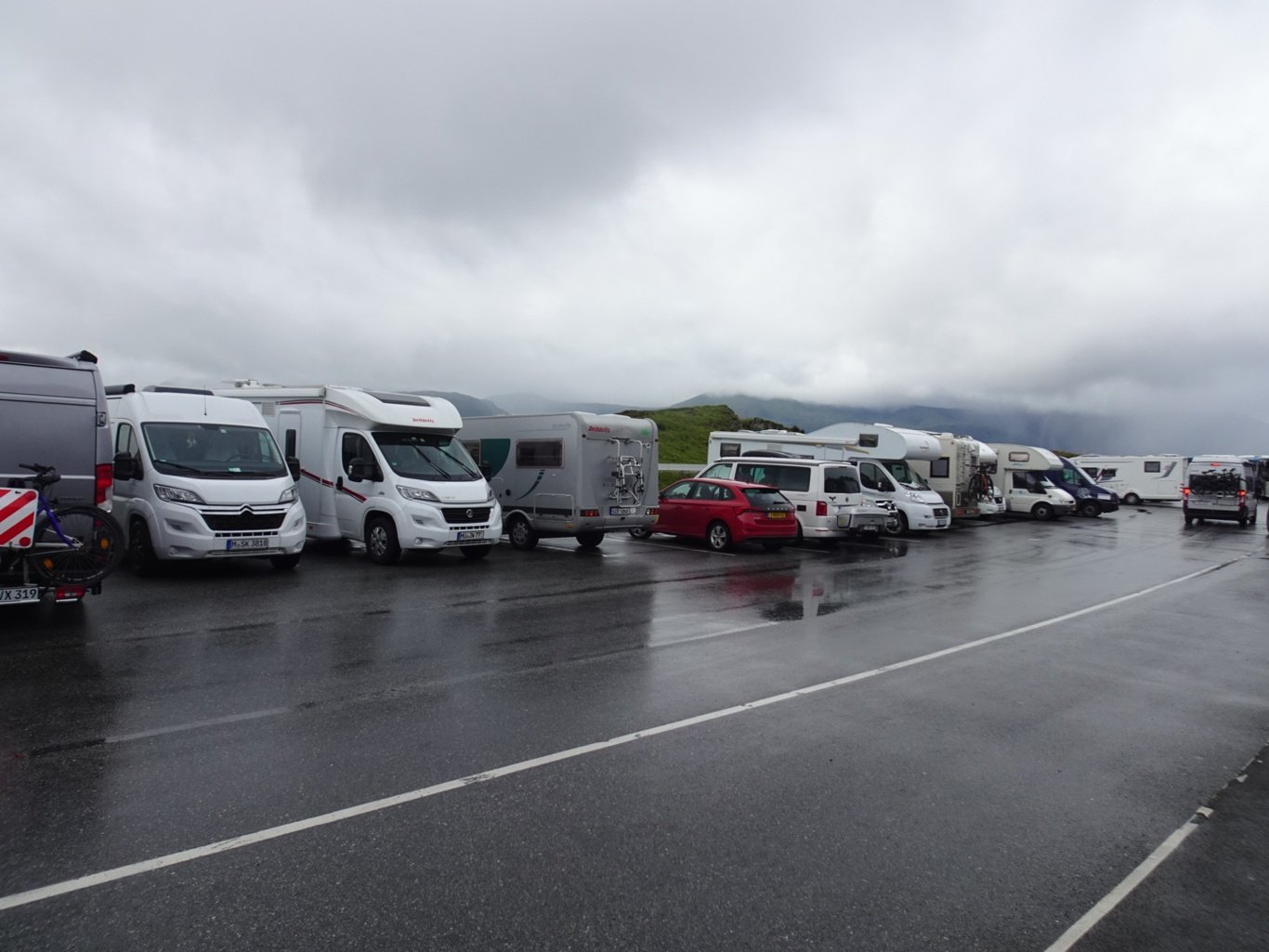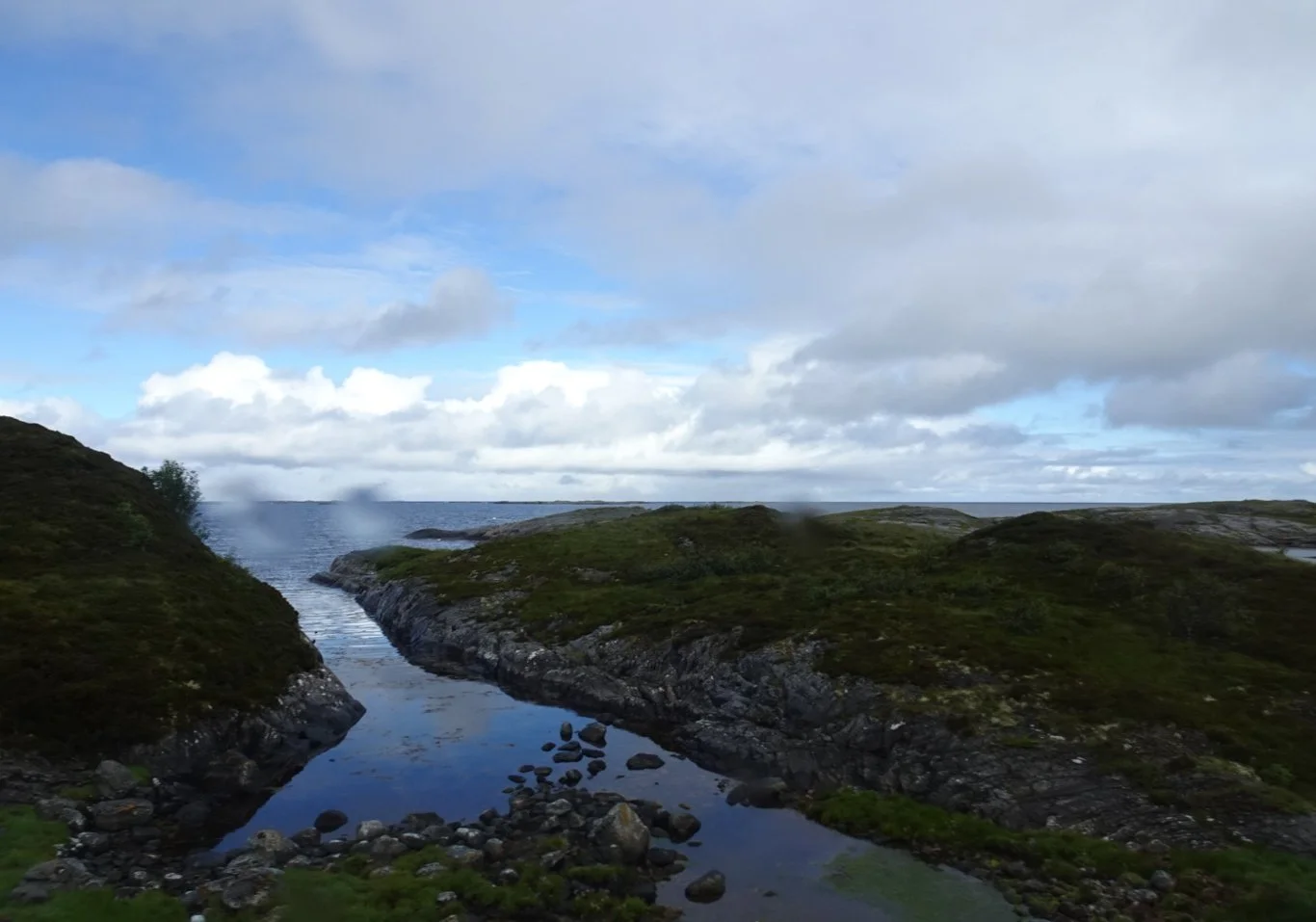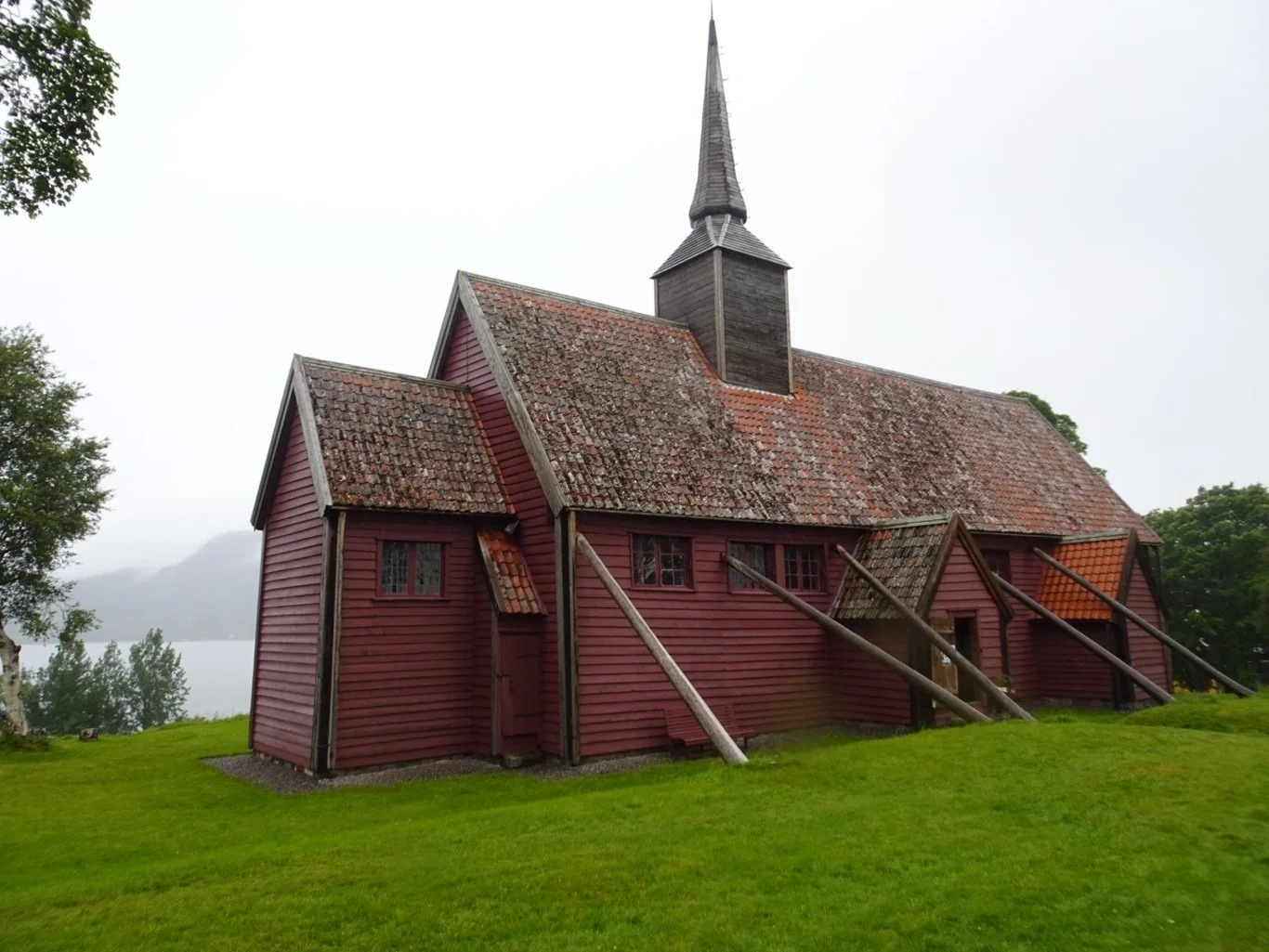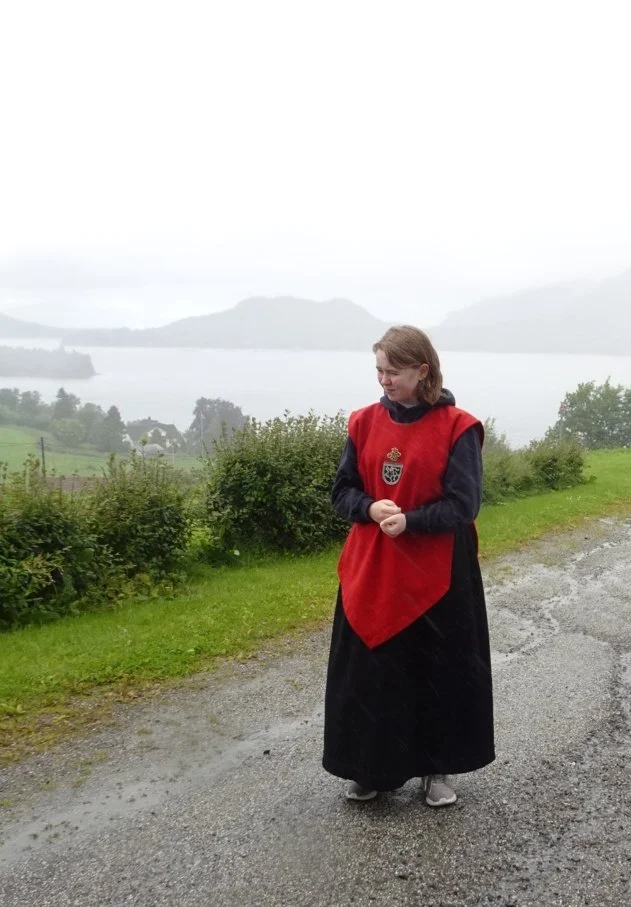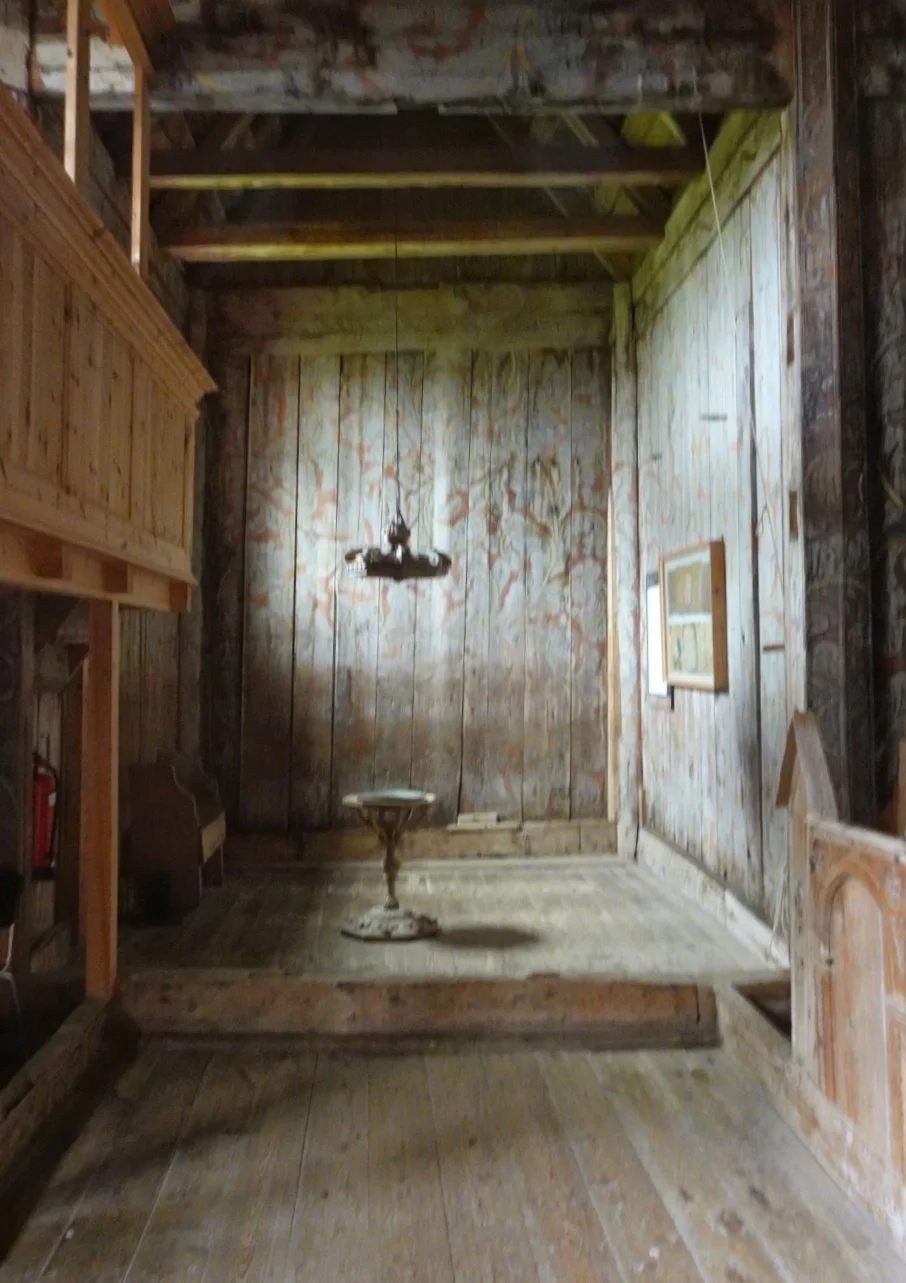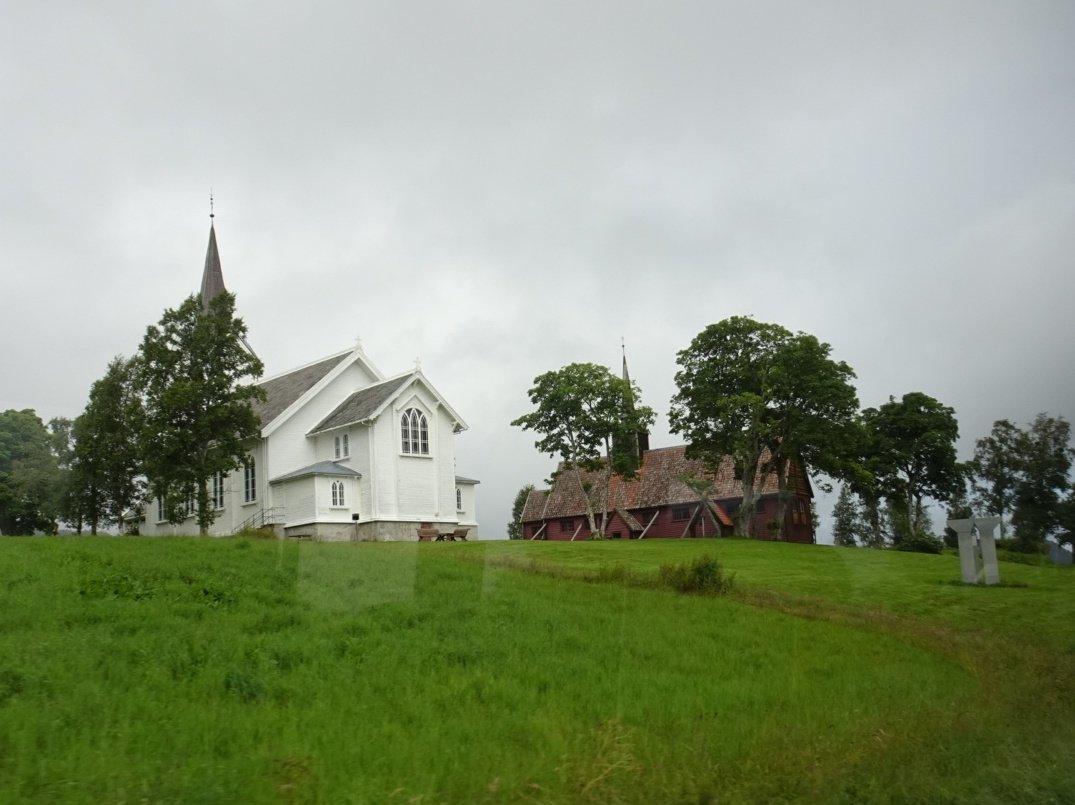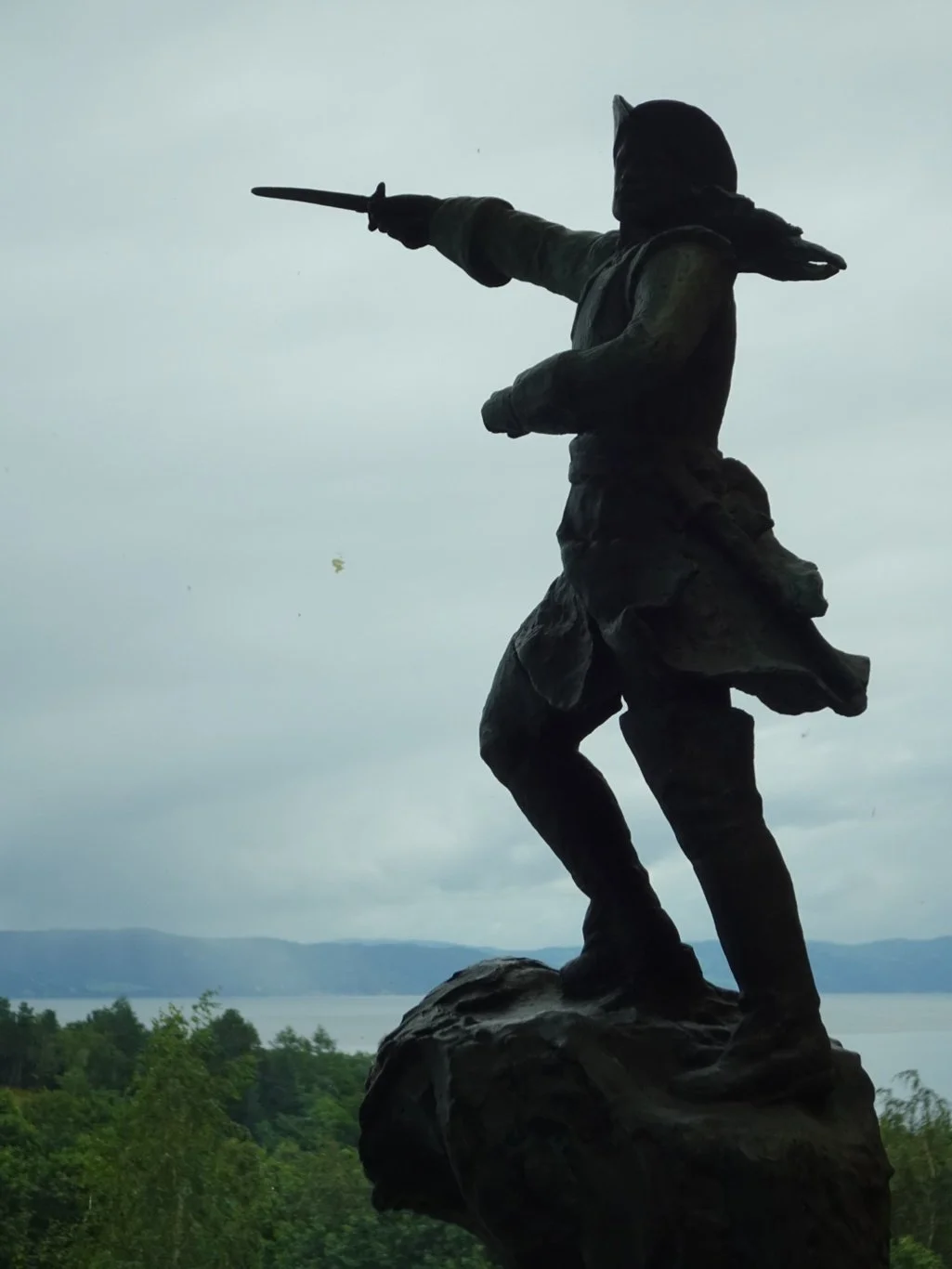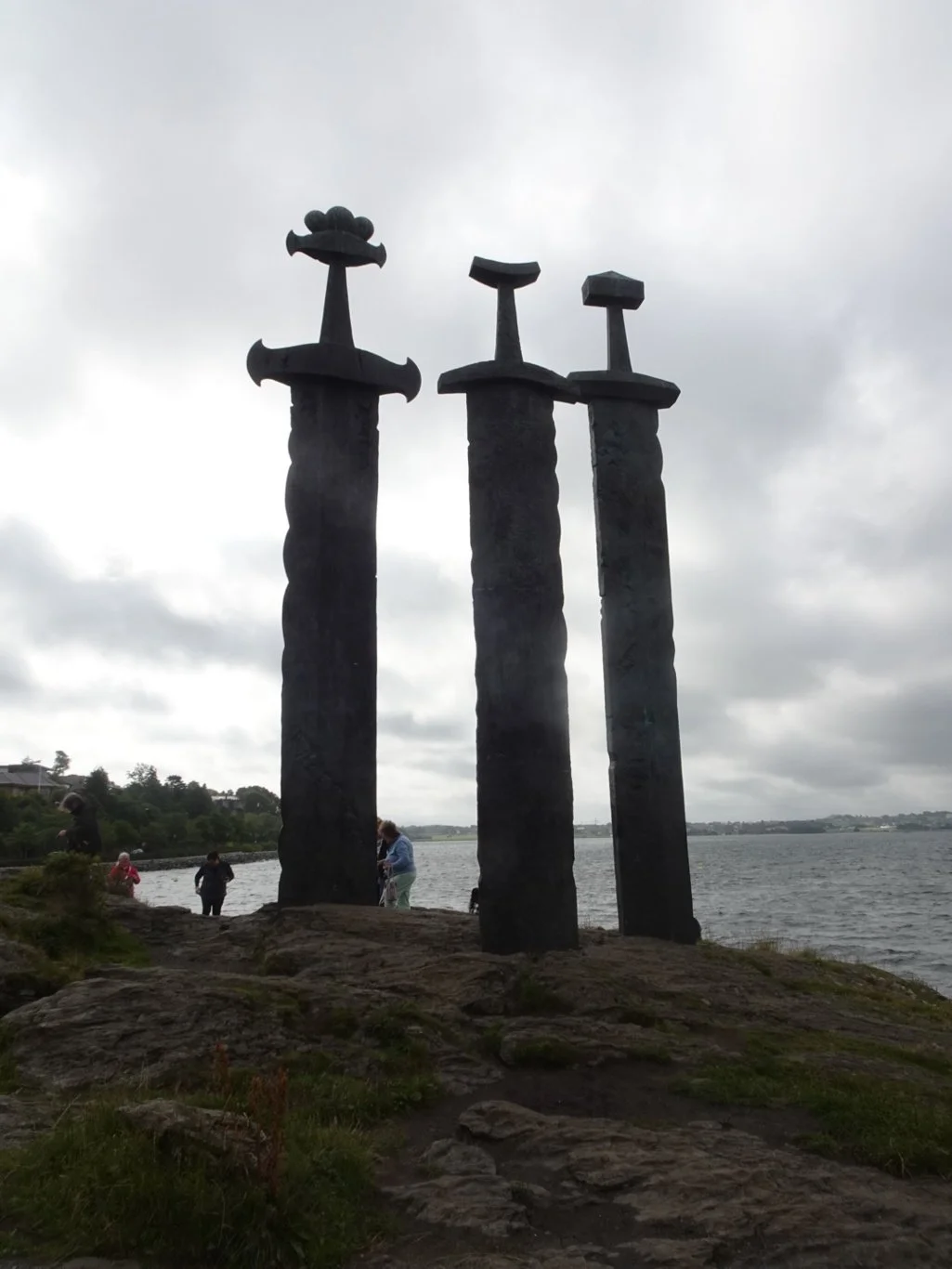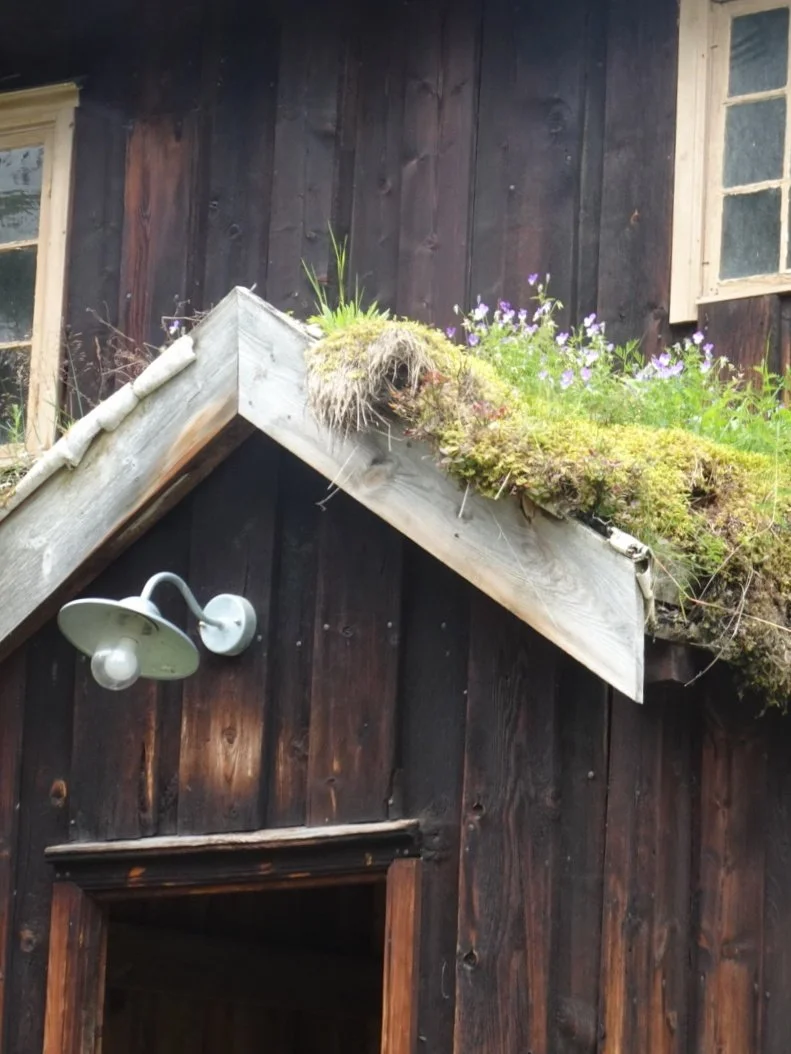Bridges and tunnels, islands and harbours
We were in Kristiansund today. It’s a city on an island. Actually it’s built on several islands, connected by bridges and tunnels with ferries running between them too. Water plays a great role in everyone’s life here in one way or another and the first landmark we came across upon leaving the ship was the Klippfisk Woman
The fishing industry is a main source of income and the figure by the harbour shows one of the women who would lay the cod out on the rocks to dry, for klippfisk - salt cod, for which the city is known.
We were soon out of the city, driving over high bridges to reach the next island, past modern sports facilities and through smart suburbs, all overlooking the water.
It was another of those instances where I could have used a map to work out where we were going and how we were getting there. We had an excellent guide who explained every place we were passing, but I simply couldn’t get my bearings.
All the time, the weather was changing. One minute it was pouring with rain, then overcast and cloudy before the sun came out and transformed the scene.
When we reached the Kristiansund Mainland Connection the sun was shining brightly and we almost dared to hope it would stay that way. But driving into the community of Eide, it had begun to rain again.
Our destination was the coast - a strange way of describing the outermost limits of this place where everywhere seems to be coastal. We were looking forward to driving on the Atlanterhavs Veien, the Atlantic Ocean Road, which was to take us along the westernmost route in this part of Norway.
Along the way, we were enjoying seeing aspects of life around here that are rather different from those at home. These little bus stops for example. Our village and those around it are known for quirky bus stops, but none of them have grass roofs and certainly none of them have collections of post boxes inside them.
We joined the Atlantic Road shortly after Eide, where we’d learned about the quarries and the stone produced there, We were at the southern end of the route and so turned right to travel in a northerly direction, together with countless motor caravans and other holiday traffic.
We’d not been driving for long before we were approaching the Storseisundert Bridge, the landmark bridge along the route and the one which reminded us so clearly of the Via Cantabrica in Spain. Here was a viewing spot, a place to park and to get out and see what it was all about. So that’s what we did.
We’d passed the bridge on this information board already, when Hildegen, our guide had identified it as the fisherman’s bridge because of the parallel section where anglers could settle to fish in safety, free from the passing traffic.
Here, the landmark was the high road bridge, which soared into the air allowing space beneath it for shipping to pass into the fjord below. It was utterly spectacular and the significant landmark of the route.
Though there by our feet was another stunning landscape, of rock strata, wild flowers and unspoilt nature right by the waterside. Hildegen explained how, after the road had been built, there was a car park and a short pathway here to allow viewing of the bridge. The land was waterlogged and became muddy, so a new pathway had been constructed.
We were thankful to be able to take advantage of this clean, even and non-slip circular route now buit into the rocks and it was a popluar place to be this morning!
Given its remote location in Europe, the registration plates in the car park were evidence of its popularity amongst people from all over the continent, (And yes, it had started to rain again)
Such a wild and beautiful place, made accessible to all.
Our route back to Kristiansund was to take us via the Stave Church at Kvernes. I had read about the Stave Churches in Norway shortly before we left home and looked forward to seeing for myself why they were considered such a treasured National heritage.
We were met by two young church guides who took us inside to tell us the story of the building, of how it came to be and most interestingly, the construction. We sat in the box pews and listened, aware of being in a special place indeed.
The dark interior coupled with the bright light shining through the windows made my photographs less clear than I’d hoped and for now, at least, I suggest taking a look at a website to see the remarkable interior.
It was still raining as we left to return to Kristiansund.
As we turned onto the road home, we had a fine view of the suspension bridge we’d driven over this morning, looking a little different in the afternoon light.
It’s been a fascinating tour and lovely to see this beautiful part of the country. Onwards to Trondheim tomorrow!







